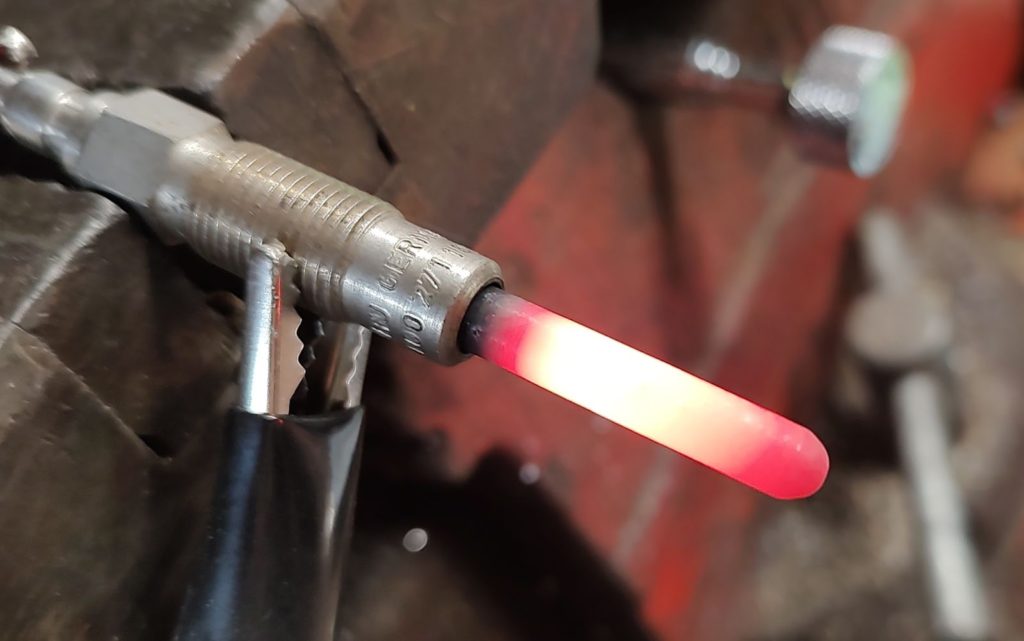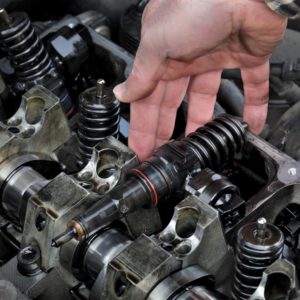When a diesel engine is cold, the air temperature that’s produced as the piston rises and compresses the air is dissipated due to the amount of heat transfer required by the cylinder head.
To resolve this issue, diesel engines with a pre-combustion chamber and many direct-injection diesel engines are equipped with a glow plug to aid starting. It is a heating element that uses 12 volts from the battery to warm up the cylinder head near the injector tip.
When a problem arises in the cylinder three glow plug circuit, on-board diagnostics (OBD) will log a P0673 code.
What Does the P0673 Code Mean?
Diagnostic trouble code (DTC) P0673 stands for “Cylinder 3 Glow Plug Circuit Open.”
Glow plugs are typically controlled by the powertrain control module (PCM), which also monitors coolant and intake air temperature.

If the PCM detects that the engine is cold via such sensors, it activates the glow plug to assist starting. As the temperature of the glow plug increases, the heating element inside also increases. This reduces the current in amperes needed by the glow plugs to function effectively.
Once the PCM receives a message from the Glow Plug Control module indicating that the glow plug is unable to heat up, it will log a code P0673. Typically, it’s a simple resistance or current flow test that flags the faulty glow plug or circuit.
Note About Glow Plugs
Each glow plug typically uses 20-25 amps when first energized and as the glow plug heats up, the current drops to 10-15 amps. Glow plugs pull enough current that heavy circuits and switching devices are used to power them up.

Glow plug control modules will measure the resistance of each glow plug separately, but older non-California diesels didn’t have this feature. Most light truck diesels have a glow plug control module if they’re equipped with glow plugs. Cummins diesel engines use an intake heater rather than glow plugs.
Glow plug control modules will measure the resistance of each glow plug separately, but older non-California diesels didn’t have this feature. Most light truck diesels have a glow plug control module if they’re equipped with glow plugs.
– Richard McCuistian, ASE Certified Master Automobile Technician
Note: The definition of code P0673 can be different depending on the vehicle manufacturer. Consult the appropriate repair manual or repair database for the exact code definition.
What are the Common Causes of the P0673 Code?
- Faulty glow plug
- Glow plug control module failure
- Glow plug wiring harness failure
- Damaged wiring connector
- Open or shorted glow plug circuit

What are the Common Symptoms of the P0673 Code?
- Illuminated check engine light
- No start or hard start condition
- Preheat light doesn’t go off
How to Diagnose the P0673 Code
DTC P0673 is a generic trouble code that can be logged in various makes and models. However, keep in mind that the exhibited symptoms and steps for diagnosis and repair can vary from one vehicle to another.
If you’re not familiar with the process of diagnosing trouble codes by yourself, it’s a good idea to bring your vehicle to a certified mechanic. But if you know how to work your way around diagnosing trouble codes, then you can go ahead and do it yourself.
To help you out, here is a video that shows you what the process might involve:
How to Fix the P0673 Code
Attempting to fix a P0673 code can be frustrating and confusing if you’re not a seasoned DIYer. Consider bringing your vehicle to a certified mechanic to ensure that the necessary steps and protocol for diagnosis and repair are followed.
Otherwise, if you think you have the right tools and know-how to do the job on your own, make sure you have the right repair manuals before proceeding. Guides like those from Chilton or an ALLDATA subscription contain vehicle-specific repair information, so you might want to check those out.
Any information provided on this Website is for informational purposes only and is not intended to replace consultation with a professional mechanic. The accuracy and timeliness of the information may change from the time of publication.


















